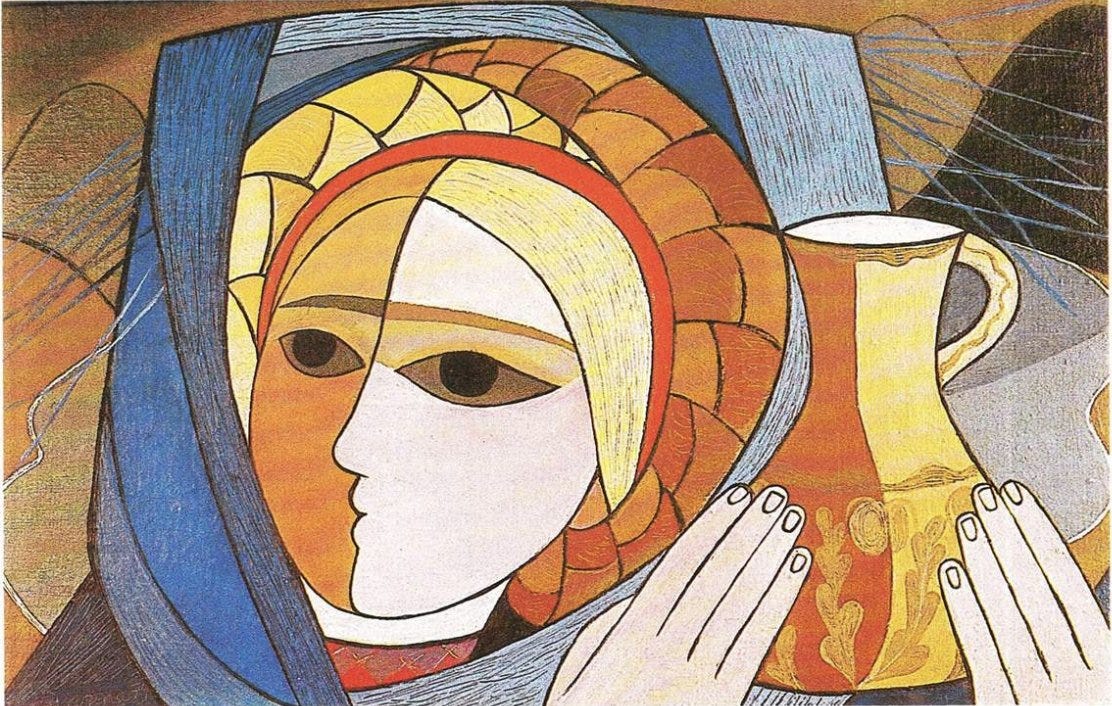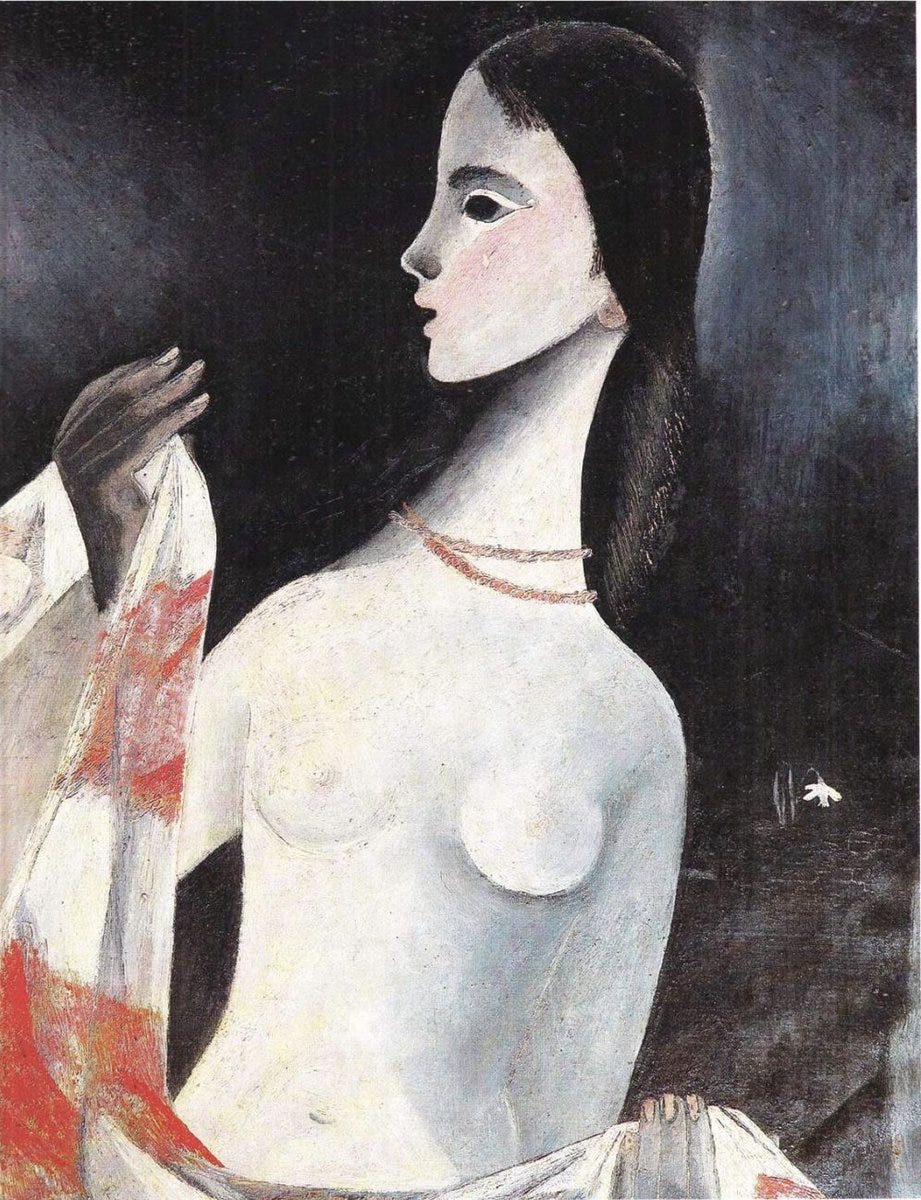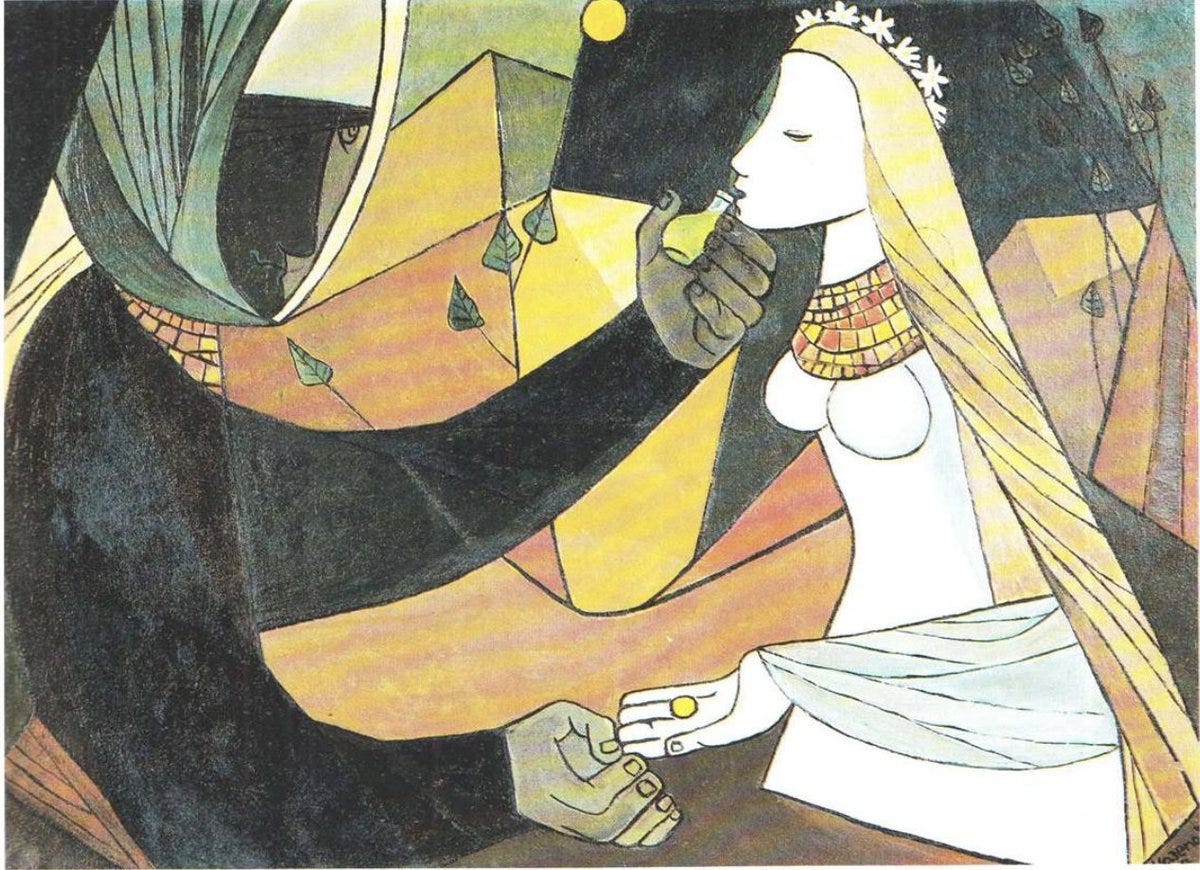

Her family lived in Dnipro until 1920, when they had to immigrate to Lviv. Because of the bolsheviks who wanted to occupy Ukrainian People's Republic and her father's life was in danger. In 1923, the family moved to Prague.
In the 1920s and 1930s, Prague was the intellectual capital of Ukrainian emigrants. In Prague, she studied at the Ukrainian Studio of Plastic Arts and the Academy of Arts. In the 1930s, she began painting, and illustrating Czech and Ukrainian books, postcards and ballet costumes
In 1933, she exhibited for the first time in Berlin and Prague. The same year she visited Paris, where she met her future husband, Volodymyr Koval. In 1935, Mazepa took part in the Retrospective Exhibition of Ukrainian Art at the National Museum in Lviv
In 1945, their two sons and Mazepa’s mother, Natalia Singalevych, were killed during the bombing of Prague.
In 1947, the family immigrated to Venezuela with their newborn son Bohdan.
In 1948, Mazepa began working for Bolivar Films as a producer of ARS Publicidad, a company specializing in cartoons. For the next 25 years, she illustrated the popular magazine for primary school children, Tricolor, published by the Venezuelan Ministry of Education.
Ukrainian Museum: Biography
HALYNA MAZEPA (born February 9, 1910; died June 30, 1995). From the series "Introducing Artists from The Ukrainian Museum's Fine Art Collection." Ukrainian artist born in St. Petersburg, Russia; died in Caracas, Venezuela.
Her family settled in Dnipro, Ukraine in 1915. Her father was appointed prime minister of the Ukrainian National Republic (UNR). After the victory of the Bolshevik Revolution, she left Ukraine with her parents in 1921. Having settled in Prague in the 1920s, she studied illustration at the State School for Applied Art (1929–1933).
Mazepa embarked on a successful career illustrating children's books and designing costumes for theater and dance. While in Prague, she also attended the Ukrainian Studio of Visual Art, where she met the artists Mykola Krychevsky and Sophia Zarycka.
In 1933 she visited Paris and met the artist Vasyl Diadyniuk, whose neo-Byzantine painting style influenced her approach to painting. The artist exhibited in Berlin and Prague (1933), and at the National Museum, Lviv (1935).
In 1945, during the bombing of Prague her mother and two sons were killed. She fled to Germany with her husband and then immigrated to Venezuela in 1947, settling in Caracas, where she resumed painting, continuing to incorporate Ukrainian historical themes and folklore.
Mazepa had a solo show at the Museo de Bellas Artes, Caracas, in 1948, and continued working as an illustrator. Her works are held in numerous museums and private collections.
Several works by Halyna Mazepa were included in The Ukrainian Museum's 2015 exhibition The Ukrainian Diaspora: Women Artists 1908–2015 (see catalogue information below).
Download the exhibition brochure. Read the essay by guest curator Dr. Adrienne Kochman: The Ukrainian Diaspora: Women Artists 1908–2015
Bilingual (English and Ukrainian)
The Ukrainian Museum, New York (2015)
Library of Congress Control Number: 2015488041
ISBN 978-0-9908522-2-3








